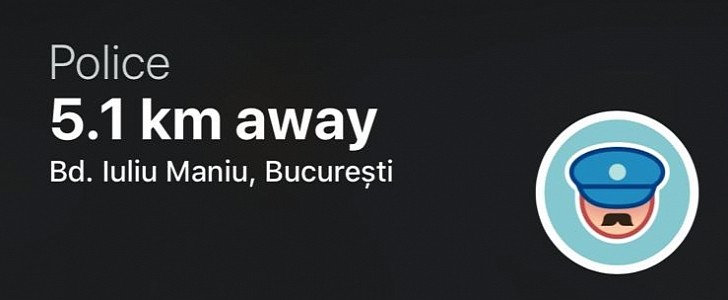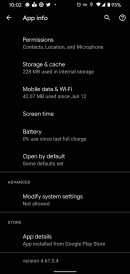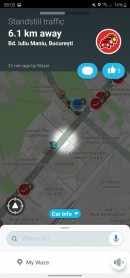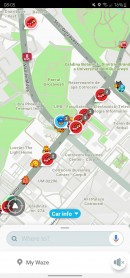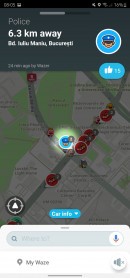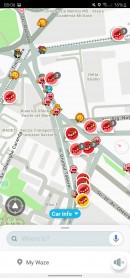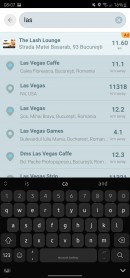The days when we had to rely on paper maps and road signs to figure out which way we needed to go to find a specific destination are long gone, as the tech revolution has pushed the majority of drivers out there to mobile apps or navigation solutions pre-loaded with the car or installed on other devices in the cabin.
Nearly every driver out there using some sort of navigation software, be it Google Maps, Waze, a map that comes bundled with the vehicle, or a dedicated GPS unit attached to the windshield.
And no matter if we like it or not, these apps are here to stay, and it happens for a very good reason: they come in incredibly handy and make reaching a specific destination faster and safer.
But when it comes to navigation software, there’s one small group of apps that has long been rather controversial due to the features it offers to users.
Waze and Coyote are the best examples in this regard, as despite allowing drivers to find a faster route to a user-defined destination, they also enable them to report the location of police checks and radars.
Before anything, it’s important to know how these applications work.
Waze, for instance, relies on a crowdsourcing engine to provide users with real-time reports on the configured route. In other words, it uses the reports sent by other users who used the same roads as you, therefore sending alerts in advance regarding what you’ll come across as you drive.
Owned by Google, Waze comes with support for a wide range of reports, including not only the controversial speed traps, but also traffic jams, accidents, roadkill, potholes, fog, vehicles stopped on the road, and so many others. Based on all these reports sent by other users like you, Waze can determine the fastest route to a destination.
And as you drive, you are provided with alerts related to the items reported by other users. Including speed traps, that is.
The police reporting feature is something that has divided users into two separate groups. On the one hand, there are drivers who believe the speed traps shouldn’t be announced on Waze because they only make it easier for speedsters to break the law without being fined. On the other hand, there are those who believe that police reports actually make the traffic much safer for everybody.
Without a doubt, there’s a gray area right here, and both sides are right at some level. I’ve personally seen speedsters slowing down ahead of police traps reported on Waze countless times, and in 99.99 percent of the cases, these drivers end up going above the speed limit seconds after getting past the police car.
But there are two reasons why apps like Waze and Coyote are a necessary evil.
First and foremost, it’s their navigation component. Without a doubt, an always-connected resource that’s updated in real time with information from other users is a valuable tool for safer traffic, especially for people driving a car in regions they don’t know.
The crowdsourcing engine is a critical part of the overall system, and it’s what makes these apps so accurate, all using nothing else than the community striving to make them better.
But what if apps like Waze and Coyote were offered without the police reporting feature?
This gets us to the second reason. And it all comes down to predictable roads. By working together and sending reports, what users running these apps do is actually create a network of predictable roads, and in their turn, predictable roads mean safer roads for everybody out there, not just cars.
If you know what’s happening ahead on the road, seconds or even minutes before reaching a certain location, you can thus be fully prepared to act accordingly, no matter if this means stopping completely, clearing the road for an emergency vehicle, or just slowing down.
Police traps themselves are for many out there a reason to slow down, sometimes harder than you’d imagine, and at some level, their location being flagged on the likes of Waze makes the road overall more predictable.
It sounds like a bit of a stretch for some people, but it’s exactly how the whole thing works, and the example I gave earlier is the living proof in this regard. Speedsters themselves brake down when approaching a speed trap flagged on Waze, so imagine how hard they’d slow down when seeing a radar all of a sudden without knowing it’s there in advance.
Some countries are trying to take action against police reports on traffic apps, hoping the common sense and the laws would just make everybody drive safer without breaking the law. That would obviously be the perfect scenario, but unfortunately for all of us, it’s not how life works, and some drivers just ignore the most basic rules, acting recklessly at the worst possible moments.
So at the end of the day, apps like Waze and Coyote are a necessary evil whose continuously growing user base only makes them more accurate.
It’s hard to say if apps warning of speed traps are good or bad for the public traffic, but if there’s anything that could help, it’s probably authorities working together with the makers of these apps to actually make roads safer overall.
Perhaps new regulation would help deal with people misusing them, but as far as the predictable part is concerned, their contribution to making the road safer is much more substantial than it seems.
And no matter if we like it or not, these apps are here to stay, and it happens for a very good reason: they come in incredibly handy and make reaching a specific destination faster and safer.
But when it comes to navigation software, there’s one small group of apps that has long been rather controversial due to the features it offers to users.
Waze and Coyote are the best examples in this regard, as despite allowing drivers to find a faster route to a user-defined destination, they also enable them to report the location of police checks and radars.
Before anything, it’s important to know how these applications work.
Waze, for instance, relies on a crowdsourcing engine to provide users with real-time reports on the configured route. In other words, it uses the reports sent by other users who used the same roads as you, therefore sending alerts in advance regarding what you’ll come across as you drive.
Owned by Google, Waze comes with support for a wide range of reports, including not only the controversial speed traps, but also traffic jams, accidents, roadkill, potholes, fog, vehicles stopped on the road, and so many others. Based on all these reports sent by other users like you, Waze can determine the fastest route to a destination.
And as you drive, you are provided with alerts related to the items reported by other users. Including speed traps, that is.
The police reporting feature is something that has divided users into two separate groups. On the one hand, there are drivers who believe the speed traps shouldn’t be announced on Waze because they only make it easier for speedsters to break the law without being fined. On the other hand, there are those who believe that police reports actually make the traffic much safer for everybody.
Without a doubt, there’s a gray area right here, and both sides are right at some level. I’ve personally seen speedsters slowing down ahead of police traps reported on Waze countless times, and in 99.99 percent of the cases, these drivers end up going above the speed limit seconds after getting past the police car.
But there are two reasons why apps like Waze and Coyote are a necessary evil.
First and foremost, it’s their navigation component. Without a doubt, an always-connected resource that’s updated in real time with information from other users is a valuable tool for safer traffic, especially for people driving a car in regions they don’t know.
The crowdsourcing engine is a critical part of the overall system, and it’s what makes these apps so accurate, all using nothing else than the community striving to make them better.
But what if apps like Waze and Coyote were offered without the police reporting feature?
This gets us to the second reason. And it all comes down to predictable roads. By working together and sending reports, what users running these apps do is actually create a network of predictable roads, and in their turn, predictable roads mean safer roads for everybody out there, not just cars.
If you know what’s happening ahead on the road, seconds or even minutes before reaching a certain location, you can thus be fully prepared to act accordingly, no matter if this means stopping completely, clearing the road for an emergency vehicle, or just slowing down.
Police traps themselves are for many out there a reason to slow down, sometimes harder than you’d imagine, and at some level, their location being flagged on the likes of Waze makes the road overall more predictable.
It sounds like a bit of a stretch for some people, but it’s exactly how the whole thing works, and the example I gave earlier is the living proof in this regard. Speedsters themselves brake down when approaching a speed trap flagged on Waze, so imagine how hard they’d slow down when seeing a radar all of a sudden without knowing it’s there in advance.
Some countries are trying to take action against police reports on traffic apps, hoping the common sense and the laws would just make everybody drive safer without breaking the law. That would obviously be the perfect scenario, but unfortunately for all of us, it’s not how life works, and some drivers just ignore the most basic rules, acting recklessly at the worst possible moments.
So at the end of the day, apps like Waze and Coyote are a necessary evil whose continuously growing user base only makes them more accurate.
It’s hard to say if apps warning of speed traps are good or bad for the public traffic, but if there’s anything that could help, it’s probably authorities working together with the makers of these apps to actually make roads safer overall.
Perhaps new regulation would help deal with people misusing them, but as far as the predictable part is concerned, their contribution to making the road safer is much more substantial than it seems.
